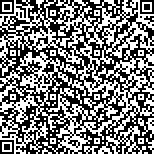| Quote
: |
沈小娟,季丽萍,汤美秀.规范化中医康复管理对颅脑损伤患者术后恢复质量的影响[J].湖南中医药大学学报英文版,2018,38(5):596-600.[Click to copy
] |
|
| |
|
|
| This paper
:Browser 2647times Download 624times |
| 规范化中医康复管理对颅脑损伤患者术后恢复质量的影响 |
| 沈小娟,季丽萍,汤美秀 |
| (江苏省如皋市人民医院神经外科, 江苏 如皋 226500;江苏省如皋市人民医院骨科, 江苏 如皋 226500) |
| 摘要: |
| 目的 探讨规范化中医康复管理在患者颅脑损伤术后康复中的应用效果,分析这种干预方式对患者恢复质量的影响。方法 纳入本院2013年6月~2016年6月间收治的颅脑损伤患者112例,随机将其分成观察组、对照组各56例。对照组采用常规康复管理,观察组在对照组基础上采用规范化中医康复管理,两组干预时间均为3个月。观察两组干预前及干预后3个月、6个月的中医证候(偏瘫、语言謇涩、口舌(口呙)斜、眩晕、头痛、目偏不瞬)积分变化,并利用Fugl-Meyer运动功能量表(FMA)、神经功能缺损评估量表(NHISS)分析两组干预前后不同时段的肢体运动功能以及神经功能缺损情况,通过上门、电话交替随访12个月,每3个月随访1次,记录死亡率。结果 两组干预后3、6个月,各项中医证候评分均较干预前降低,且干预后6个月评分低于干预后3个月(P<0.05);观察组干预后6个月的偏瘫、语言謇涩、口舌(口呙)斜证候积分均低于同时段对照组,(P<0.05);两组干预后3、6个月,FMA运动功能评分高于干预前,且干预后6个月评分高于干预后3个月(P<0.05);观察组干预后6个月的平衡、关节活动度评分较同时段对照组高(P<0.05);两组干预后3、6个月的NHISS评分均较干预前降低,且干预后6个月评分低于干预后3个月(P<0.05);观察组干预后6个月的NHISS评分显著低于同时段对照组(P<0.05);观察组死亡率与对照组比较,差异无统计学意义(P>0.05)。结论 规范化中医康复管理能为颅脑损伤患者提供针对性的康复计划,促进患者肢体功能改善,减轻神经功能缺损程度,值得推广应用。 |
| 关键词: 颅脑损伤 中医康复管理 运动功能 偏瘫 |
| DOI:10.3969/j.issn.1674-070X.2018.05.028 |
| Received:December 12, 2017 |
| 基金项目:江苏省如皋市科研课题(2014A05092)。 |
|
| Effect of Standardized TCM Rehabilitation Management on Postoperative Recovery Quality of Patients with Craniocerebral Injury |
| SHEN Xiaojuan,JI Liping,TANG Meixiu |
| (Department of Neurosurgery, Rugao People's Hospital of Jiangsu Province, Rugao, Jiangsu 226500, China;Department of Orthopedics, Rugao People's Hospital of Jiangsu Province, Rugao, Jiangsu 226500, China) |
| Abstract: |
| Objective To explore the effect of standardized TCM rehabilitation management on postoperative recovery, and to analyze the influence of this intervention mode on the quality of recovery. Methods The 112 cases of craniocerebral injury treated in our hospital from June 2013 to June 2016 were randomly divided into observation group and control group, 56 cases in each group). The control group was adopted routine rehabilitation management, and the observation group was received with standardized rehabilitation management on the basis of the control group. The intervention time of the two groups was for 3 month. The changes of TCM syndromes were observed before intervention and at 3 months and 6 months after intervention. The limb movement function and nervous function defect were analyzed by Fugl-Meyer motor function scale (FMA) and NIH stroke scale (NHISS). The mortality of patients was recorded by follow-up (visit or telephone) for 12 months, once every 3 months. Results After intervention for 3 and 6 months, TCM syndrome scores were lower than the control group, the score after intervention for 6 months was lower than that intervention for 3 months (P<0.05). The syndrome scores in the observation group were lower than those in the control group at the same period (P<0.05). After intervention for 3 and 6 months, FMA was higher than before intervention, and the socre of intervention for 6 months was higher than the intrvention for 3 months (P<0.05). The scores of banlance and joit range of motion in observation group after intervention for 6 months were higher than those in the control group at same period (P<0.05). The NHISS score in the observation group and control group after intervention for 3 and 6 months was lower than before treatment, and the score of intervention for 6 months in the two groups was lower than intervention for 3 months (P<0.05). The NHISS of observation group after intervention for 6 months was lower than that of control group at same period (P<0.05). The mortality in the observation group and the control group was not statistically significant(P>0.05). Conclusion Standardized TCM rehabilitation management can provide targeted rehabilitation plan for patients with craniocerebral injury, promote the improvement of limb function, and reduce the degree of nerve function defect, so it is worthy of popularization and application. |
| Key words: craniocerebral injury TCM rehabilitation management motor function hemiplegia |
|

二维码(扫一下试试看!) |
|
|
|
|


